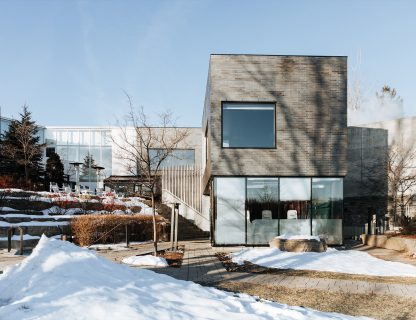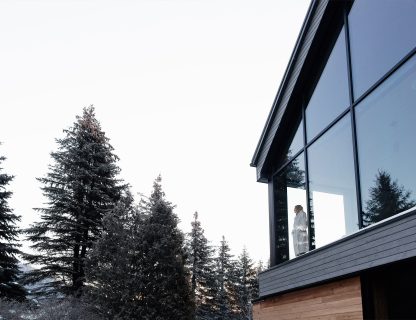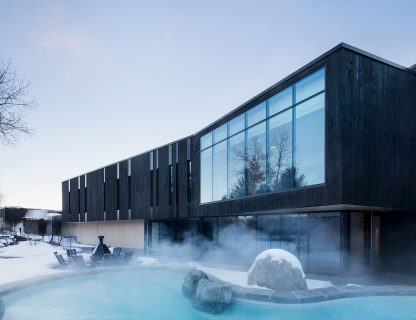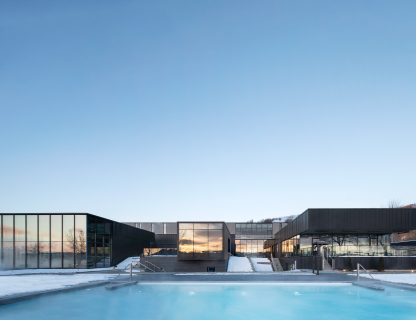While relaxing on the banks of “lac des battures”, it is possible to hear and see different species of amphibians, birds, reptiles and mammals. We had the pleasure to talk with the staff of “Nature-Action” to learn more about the creation of Nuns’ Island, the “lac des battures” and the diversity and richness of its wildlife. Happy reading!
Article by Nature-Action Québec
Nuns’ Island, formerly known as Saint Paul Island, has much evolved since the 1960s. Only the forested Domaine Saint-Paul was present at that time. The other natural environments of the island’s South Point were created as a result of landfilling. The forested waterfront area has installed itself on the landfill and is today considered a naturalized area where trees of large calibre and around fifty years of age have settled, as well as many plant and animal species. These environments are widely used by the birdlife, since the island is situated in an important migratory corridor.
“Lac des Battures” was created following the abandonment of a landfill site intended to receive material from construction sites on the island. Since the site was dug in a swampy area and the expected material never arrived, the hole gradually filled up with water, transforming it into the lake you see today. It is fed by groundwater and rainwater. Although it is artificial, many studies give it undeniable ecological value, considering the additional habitats it provides for birds, amphibians, reptiles, as well as mammals. The lake is also a wonderful place to observe the birdlife, especially the waterfowl, and for the observation of nature in general. Common Reed has settled on the shores of “Lac des Battures”, competing with the local flora. This invasion is being documented and despite the realization that it could reduce the sector’s ecological integrity, it is recognized that all natural environments of Nuns’ Island’s South Point are of undeniable importance with reference to the ecological values, the heritage, the landscape and also because of the ecological services they provide to the community.
To date, two turtle species were observed in the “Lac des Battures”: the snapping turtle (Chelydra serprentina), listed as “special concern” in Canada, and the painted turtle (Chrysemys picta). Several other species of amphibians and reptiles are present on the South Point of Nuns’ Island, including the garter snake (Thamnophis sirtalis) and the brown snake (Storeria dekayi), a species very likely to be listed endangered in Québec. It can only be found in the Montreal area.
 Nuns’ Island’s avifauna is known for its great diversity. The geographical location of the island, it is situated in a migratory corridor, and the diversity of environments (river, lake, swamp, woodland, open areas, etc.), provide a perfect and much appreciated site for birds. To date, over 200 species have been recorded, making this site a popular spot for bird watching enthusiasts. Two species also deserve special attention since they are listed as endangered in Quebec: the least bittern (Ixobrychus exilis), a small heron, and the peregrine falcon (Falco peregrinus Anatum). Let’s not forget the presence of the great blue heron (Ardea herodias) and numerous species of birds of prey and owls, such as the eastern screech owl (Asio Megascops).
Nuns’ Island’s avifauna is known for its great diversity. The geographical location of the island, it is situated in a migratory corridor, and the diversity of environments (river, lake, swamp, woodland, open areas, etc.), provide a perfect and much appreciated site for birds. To date, over 200 species have been recorded, making this site a popular spot for bird watching enthusiasts. Two species also deserve special attention since they are listed as endangered in Quebec: the least bittern (Ixobrychus exilis), a small heron, and the peregrine falcon (Falco peregrinus Anatum). Let’s not forget the presence of the great blue heron (Ardea herodias) and numerous species of birds of prey and owls, such as the eastern screech owl (Asio Megascops).
 Many small mammals frequent the natural environment of Nuns’ Island. Including the Canadian beaver (Castor canadensis), the red fox (Vulpes vulpes) and several species of small rodents and bats. Two of these are likely to be listed as endangered species in Quebec, the hoary bat (Lasiurus cinereus) and the silver-haired bat (Lasionycteris noctivagans).
Many small mammals frequent the natural environment of Nuns’ Island. Including the Canadian beaver (Castor canadensis), the red fox (Vulpes vulpes) and several species of small rodents and bats. Two of these are likely to be listed as endangered species in Quebec, the hoary bat (Lasiurus cinereus) and the silver-haired bat (Lasionycteris noctivagans).
 – “Nature-Action Québec”, all rights reserved.
– “Nature-Action Québec”, all rights reserved.
“Nature-Action Québec” is a non-profit organization whose mission is to guide people and organizations in the application of the best environmental practices. “Nature-Action Québec” performs more than 150 environmental projects annually to help improve the environment, health, well-being and quality of life of the Quebec population.
YOU MAY ALSO LIKE THIS ARTICLE




